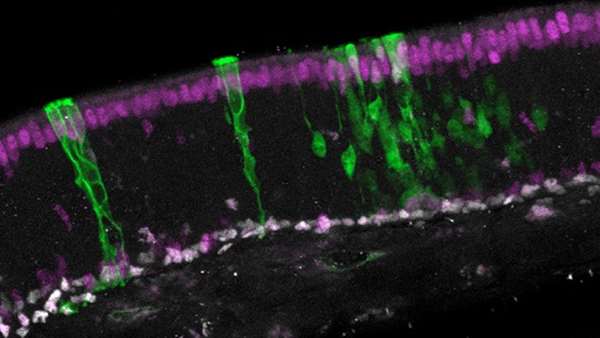Researchers discover abundant source for neuronal cells
USC researchers seeking a way to study genetic activity associated with psychiatric disorders have discovered an abundant source of human cells—the nose.
USC researchers seeking a way to study genetic activity associated with psychiatric disorders have discovered an abundant source of human cells—the nose.
Olfactory epithelial cells, easily collected from the lining of the nasal cavity, can serve as stand-ins for brain cells in studies of the neuronal epigenome, USC researchers say. The epigenome is a system of modifications on DNA and proteins that controls which genes are active and which are suppressed; changes in the epigenome sometimes give rise to disease.
This discovery, led by Peggy Farnham, William M. Keck Professor of Biochemistry and the Chair of the Department of Biochemistry and Molecular Biology at the Keck School of Medicine of USC, appears in the Dec. 13 issue of Science Advances.
It"s part of the first set of publications by the PsychENCODE Consortium, an initiative organized by the National Institute of Mental Health in 2015 to provide insights into the biology of human brain development and disease.
The project currently focuses on three major psychiatric disorders: autism spectrum disorder, bipolar disorder and schizophrenia, looking at brain regions and cell types that previous research has suggested contribute to these disorders.
The USC findings could prove to be an important tool in this effort. Olfactory epithelial cells are similar to those found in the embryonic neural tube, a structure that develops into the brain and spinal cord. From a tiny biopsy from the upper nasal cavity, researchers can grow dish after dish of cells, an improvement over using difficult to grow stem cells or brain cells from deceased donors.
"We can do all sorts of assays that wouldn"t be possible if you were trying to grow cells from little bits of brain tissue," Farnham said. "Also, the ease of collection has allowed us to perform these assays using cells from many different individuals."
Reference : S.K. Rhie el al., "Using 3D epigenomic maps of primary olfactory neuronal cells from living individuals to understand gene regulation," Science Advances (2018). advances.sciencemag.org/content/4/12/eaav8550





ارسال به دوستان